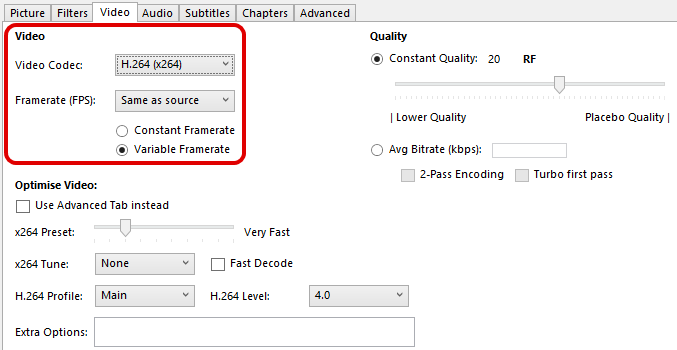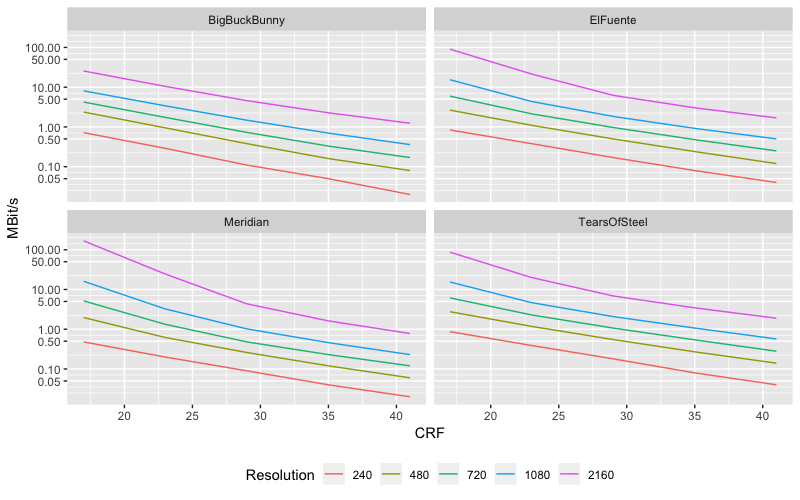X264 Vs X265 File Size
Before posting.Make sure to.This subreddit is for asking for objective explanations. It is not a repository for any question you may have.E is for Explain - merely answering a question is not enough.LI5 means friendly, simplified and layperson-accessible explanations - not responses aimed at literal five-year-olds.Perform a keyword search, you may find good explanations in past threads. You should also consider looking for your question in the FAQ.Don't post to argue a point of view.Flair your question after you've submitted it.Category filters. The actual encoding is called h.264 and h.265; x264 and x265 are an implementation of that standard.The h.264 encoding is older and more widespread.
For x265, the default CRF is 28: ffmpeg -i input.mp4 -c:v libx265 -crf 28 output.mp4 For libvpx, there is no default, and CRF can range between 0 and 63. 31 is recommended for 1080p HD video.
There are a ton of devices that can do h.264 very quickly and/or very energy efficiently. The h.265 encoding is newer and claims to outperform h.264 in many ways, though many devices don't support it (though virtually all PCs, tablets, etc will support both; the devices that won't are very low power, embedded devices and the like).In practice both encodings have a lot of knobs and dials to play with: you can get a lot of performance out of either, or you can tune either to be absolute garbage. On average, you should expect h.264 to take less processing but to leave you with a bigger file, while h.265 will likely take much more processing to encode, somewhat more processing to decode, and will leave you with a smaller file.Which one is better depends on your use.
If the goal is to wind up with as small of a file as possible (e.g. If you're trying to archive a bunch of videos on a hard drive with limited space) then h.265 is going to be the way to go. If you're trying to compress videos to watch on your tablet then perhaps consider h.264: the lower processing load means that you'll get a bit better battery life. In most cases expect h.265 to be the better choice; it's the more modern standard, though hardware hasn't quite caught up with it yet.As for x264 vs x265, these are software projects that are fairly widely used in programs like FFmpeg or HandBrake. The x265 project is based on the x264 code so they're very similar to one another, though obviously they implement different encoding. The choice between them should be based on h.264 vs h.265, not on the features of x264 vs x265. I'm a software engineer who works almost exclusively with video technology.
As other posters have said, x264 and x265 are the names for the open source implementations of the two codecs. They are proudly part of LibAVCodec that is used in applications like HandBrake, FFMPEG, and VLC.The short answer is the H.265 (x265) is newer and will give you better quality at the same size (bitrate) as H.264 (x264). This is especially true with larger frames (i.e. 4K video) In exchange, it's less supported by hardware devices (because it's newer), and it uses a lot more CPU power to encode and decode. If you aren't encoding 4K video, I would honestly stay with H.264 High Profile 4.1 because it is supported by virtually all hardware devices over the last couple of years.Now here's the long answer:There are tons of video codecs. Basically video is friggin HUGE.


To store RAW 1080p (HD) video at 59.94 fps (3BPP) would require almost 375MB per second of storage, and this is actually how much data goes through your encoder/decoder. This is insane. So, a lot of methods were created and built off the old methods to compress the video. Virtually all video compression is 'lossy' in that it changes the video to make it easier to compress while hopefully changing it in such a way that you don't notice.Modern video encoders look at whole GOPs (groups of pictures) when compressing. These are a configurable size, and are usually 1-4 seconds long. They do this because video frames from one to the next typically don't change much. H.264 was originally an extension of MPEG-4 (made famous by DivX) which was a sequel to MPEG-2 (DVD format), which was a sequel to (you guessed it) MPEG.
Basically, every format just added new techniques and capabilities that the encoder could employ to compress the video more. Even H.264 has a series of profiles and levels that limit which techniques it's allowed to do or how many steps it is allowed to include to render a scene. H.265 is just an extension of this really.
They took everything they did in H.264 and added to it while looking at 4K video as the goal moving forward.One thing to keep in mind, because all the MPEG formats are patented and NOT royalty free. The industry is definitely shifting to VP8/VP9 (soon to be VP10) because it pretty equivalent and free.
Hardware DSP support is limited though, so more commercial video distribution is still in the MPEG world. The short answer is yes, but it's not that simple. Depending on your encoder, you usually have a quality factor OR a bit rate that you can configure. Generally in the industry, H.265 (aka HEVC) is mostly used for 4K/8K video because H.264 is considered 'good enough' for 1080 (1920x1080) and below, but 4k video is 4 times the size of 1080 video.The bit rate is more common for hardware based encoders, and most people discuss video with 'bit rate' as the term they use because it's somewhat consistent for all encoders (although then you get into the discussion of variable rate and constant rate encoding). With the bit rate, it's like saying, I want it to fit in this box, cut off as much as you need to. So, if you want the video to be 1MB per second, it'll be 1MB per second no matter what. With H.264, the quality would be noticeably lower at the same bit rate (especially for 4K frames).When it comes to quality values, they actually vary from encoder to encoder.
So, it's not clear to say. Theoretically, if you had a true apples-to-apples comparison of quality, the H.265 file would be significantly smaller. (estimates are half the size at similar GOP sizes for large frames) How much smaller depends on the contents of the video and the size of the video frames and the encoding settings, and it can vary tremendously based on those. Yes you probably would, but Lossless encoding is really a waste. You would get better results storing the file as a raw AVI and then compressing it when 7-zip. The problem with quality measurements is they are truly subjective.
There's the QF used by many encoders (quality factor) that can be set to force losses to be as minimal as you want them to be. You can do very high bitrate encodings that might as well be lossless. For example 1080p video at 21MBPS (H264) at high profile on virtually any encoder will show virtually no loss even after multiple re-encodings. I would challenge anyone to tell the difference between the encoded version and unencoded version. The real names are AVC and HEVC. AVC has been accepted as the standard H.264 by the ITU and as MPEG-4 Layer 10 by the MPEG organisation.
HEVC has been accepted as H.265 by ITU and as MPEG-H by MPEG. You should only use H.264 and 5 if you are discussing within the ITU universe. It is never wrong to use AVC and HEVC.HEVC is designed with very large pictures in mind, essentially 4k was driving it, so it allows the compression mechanism to cut the picture into large blocks, whereas AVC only ever worked with small blocks. HEVC has a lot more predictors, meaning you can transmit a small bit code that represents a lot of information to the decoder when interpreted. As you have more of these predictors, the encoder needs to try them all to see which ones fit, and thus HEVC is hugely more complex to run than AVC. It does however give compression gain of down to 50% in comparison for the same size video pictures.HEVC is still in a bit of a pickle due to fighting over patenting rights.
Essentially, 3 tiny companies are claiming their rights on insignificant patents. Google are trying to run their own claiming that it's free of patents, except that they're pretty much in violation of every patent used for AVC.
X264 X265 File Size
All the big players are tired of the small patent trolls and have joined together in what's called the Alliance for Open Media, and are attempting to chuck out a new codec without any of the people who are claiming premiums for their patents, so something exciting might be happening in the near future.
Why would I do this? Welcome Titan Quest Fans!If you think TQIT was cool and you thought Lilith was even cooler but you still think that your idea could make the best Hack and Slash game in history this is the place for you.I have no idea (November 2008) how to make a TQIT Mod (TQM). But I am gonna learn and this wiki will be the place I record everything I find out. Titan quest custom maps download minecraft.